Summary of Climate Disasters on the Planet: October 23-29, 2024
Spain
Spain was hit by a series of devastating storms within a few days. On October 27, the province of Almería located in the Andalusia region was hit by heavy rainfall and hailstones up to 5 cm (2 inches) in diameter, which broke windows in vehicles and ruined greenhouses.
The next day, in Benifaió municipality in the Valencia region, eyewitnesses recorded a massive tornado lifting debris and parts of buildings into the air.
Notably, the tornado was spinning clockwise, while most tornadoes in the Northern Hemisphere rotate counterclockwise.
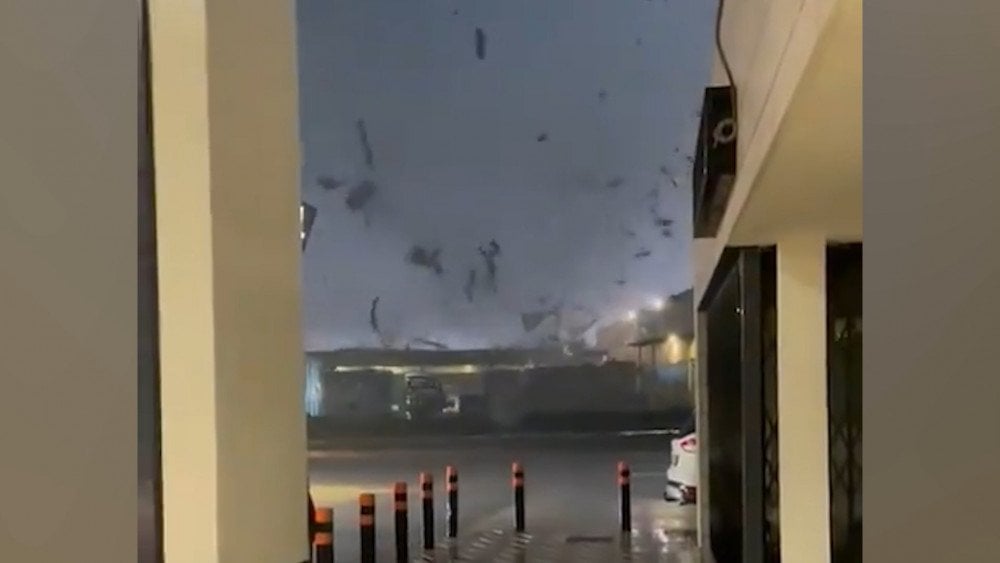
Devastating tornado in Benifaió, Valencia region, Spain
On October 29, a real tragedy struck Spain, claiming at least 217 lives. According to the Spanish meteorological agency AEMET, in the town of Chiva, Valencia region, 491 mm (19.3 inches) of rain fell within 8 hours, far exceeding the annual average rainfall (average yearly total is 427 mm, or 16.8 inches). This resulted in catastrophic flooding.
Torrents of murky water surged down streets at high speed, demolishing walls of houses, trash containers, and everything in their path. Cars left in traffic jams and parking lots were overturned and piled up by the water.
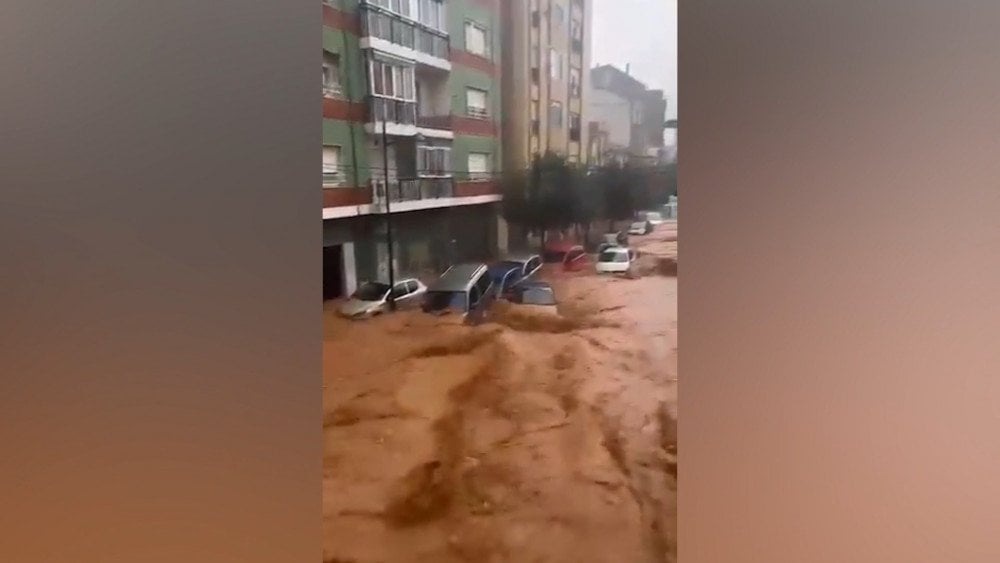
Raging flood waters sweep away cars in the streets of Chiva, Valencia, Spain
Valencia plunged into chaos, with most highways becoming impassable. Railway services were completely halted. Dozens of flights were canceled or rerouted. Ports were closed due to a sea storm.
Flooding was also reported in the cities of Murcia, Málaga, and surrounding areas, with some regions receiving more than 100 mm (3.9 inches) of rainfall.
Near Málaga, a high-speed train carrying 276 passengers derailed.
Residents of Valencia were caught unawares: people found themselves trapped on the ground floors and in the basements of buildings. Hundreds of people sought refuge on rooftops and even on trees! Boats and helicopters were used to evacuate the locals.
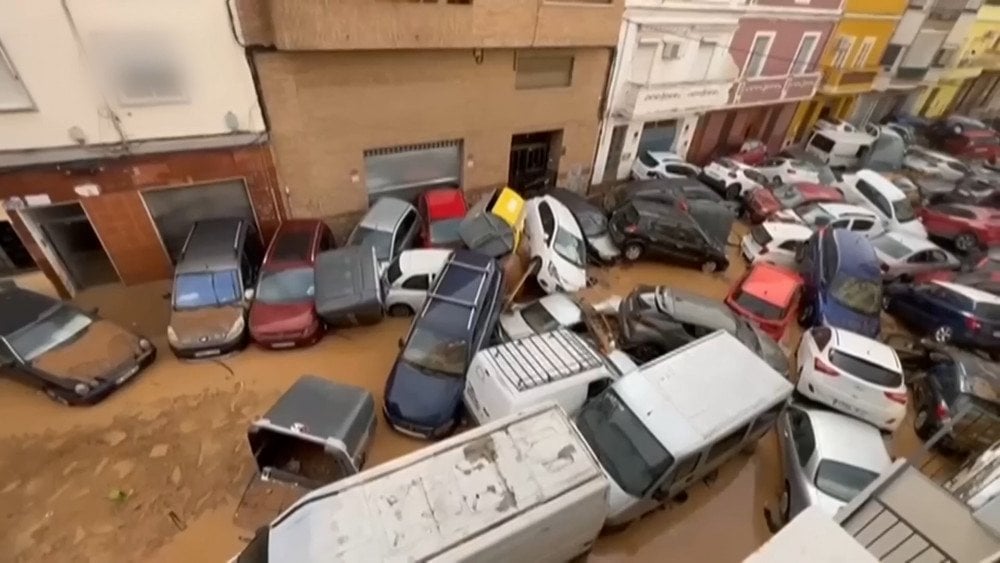
Catastrophic aftermath of sudden powerful flooding. Valencia, Spain
Rescuers persistently searched for survivors amid the wreckage and debris, using drones in hard-to-reach places. Sadly, in previously inaccessible areas, dead bodies were often found in the mud.
The mayor of a particularly hard-hit small town of Paiporta reported that many residents failed to escape their single-story houses because the town was flooded literally within 10 minutes. Some people went to move their cars and never came back. Several elderly people drowned in a nursing home.
Tropical Cyclone Dana
On October 25, a tropical cyclone Dana struck the Indian states of Odisha and West Bengal, bringing mighty winds with gusts up to 120 km/h (74.5 mph), torrential rains, and storm surges.
In Odisha, schools were closed, and over 200 trains were canceled. More than one million people were evacuated in both states. A total of 7,457 aid centers were set up to accommodate them.
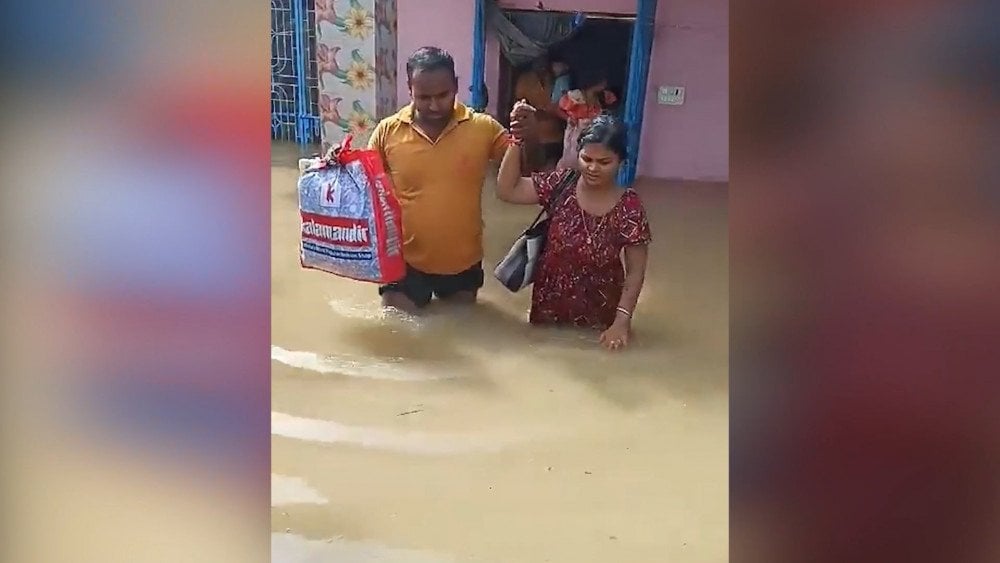
People escaping flooded houses in India
The storm caused severe damage to infrastructure, broke off power lines, and uprooted trees, leaving over 2 million homes without electricity.
Preliminary estimates suggest the cyclone damaged over 180 thousand hectares (444,8 thousand acres) of crops, heavily impacting key staples like rice and potatoes.
The disaster affected a total of 3.8 million people. Unfortunately, four people died in West Bengal.
Typhoon Trami
Typhoon Trami, known in the Philippines as Kristina, struck the country on the night of October 24, bringing torrential rains and powerful winds with gusts up to 160 km/h (99.5 mph).
Trami delivered a devastating blow to the central and northern provinces of the Philippines.
In some areas, more than 500 mm (19.7 inches) of rain fell within the first 24 hours, exceeding the monthly average. In Naga City, rainfall levels surpassed two monthly norms, causing flash floods that inundated villages.
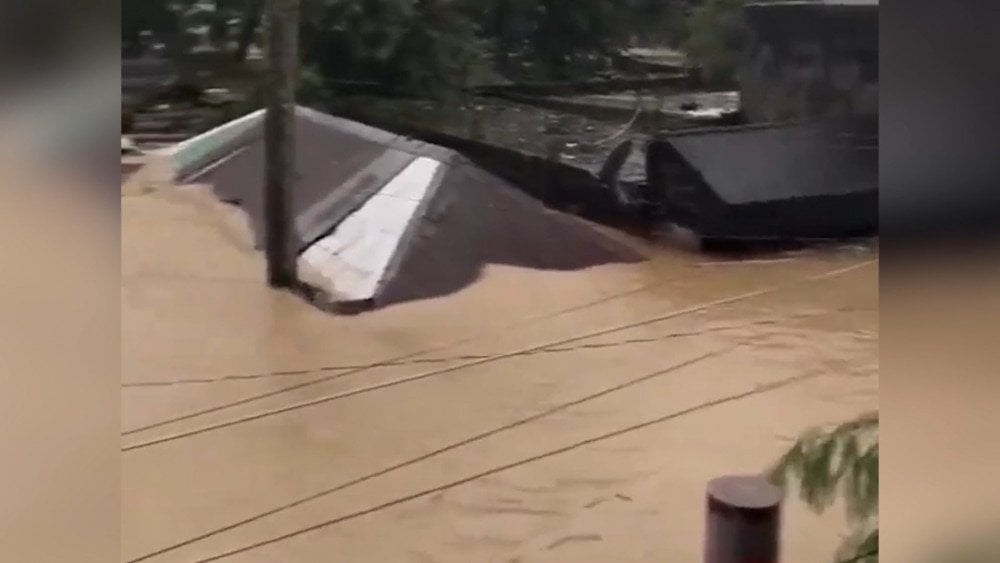
Enormous amounts of rainfall resulted in catastrophic flooding of homes in Philippines
Thousands of people were forced to wait for help on the roofs of their houses. About 1,500 people were involved in rescue operations, but the lack of motorized boats hindered evacuation efforts.
The storm severely disrupted the power grid and transport network. More than 250 roads and 40 bridges were damaged.
All flights were canceled at two airports in the Mimaropa region. Authorities shut down schools and declared a state of emergency in the affected areas.
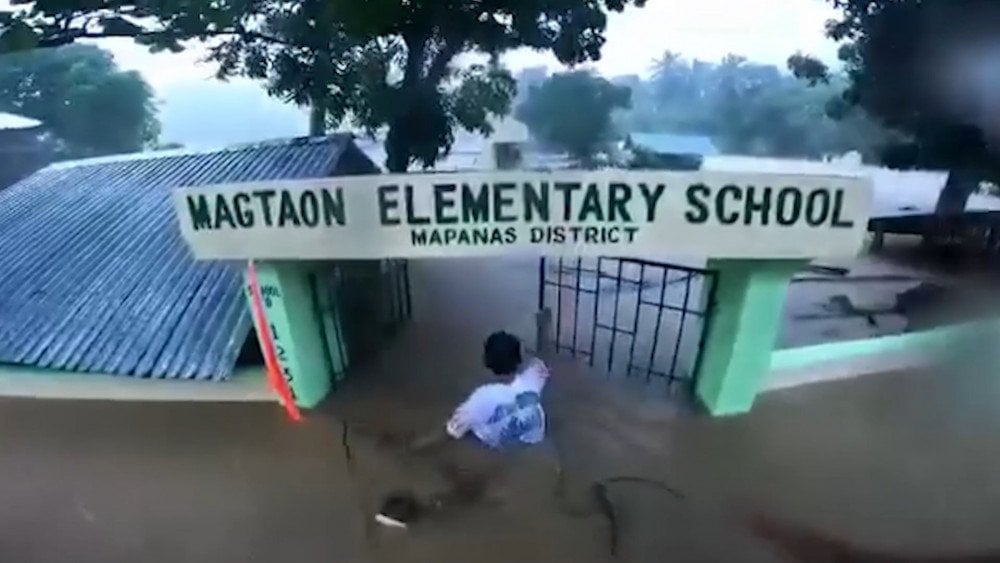
Severe flood caused by Typhoon Trami. Philippines
About 7.135 million people were affected by widespread floods and landslides in the Philippines. As of October 29, 2024, the death toll reached 111, with 30 more people still reported missing. Nearly one million people were forced to leave their homes. After ravaging the Philippines, the storm moved towards Vietnam where it caused powerful winds and heavy rains starting October 24.
Three days later, Trami made landfall with winds reaching up to 88 km/h (55 mph) in the area of Da Nang and the central provinces of Quảng Bình, Quảng Nam, Quảng Trị, and Thừa Thiên Huế.
In Da Nang city, the storm severely damaged tourism infrastructure.
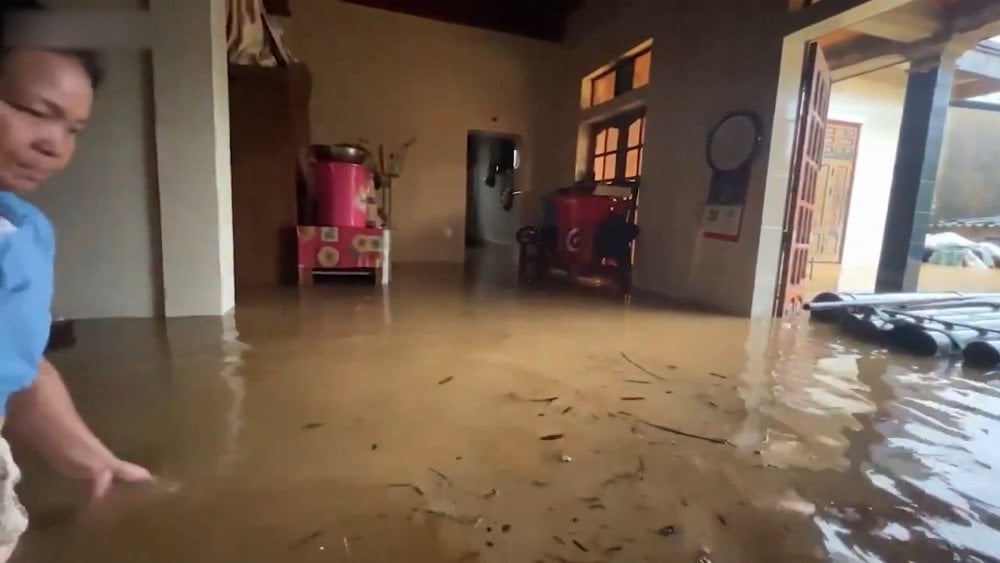
Flooded building in Da Nang, Vietnam
In Quảng Bình province, up to 620 mm (24.4 inches) of rain fell in some areas, flooding about 17,000 houses.
The Lệ Thủy district was particularly affected and became completely isolated by floodwaters, with many residents evacuated. Thousands of hectares of farmland and fisheries were also damaged.
The disaster claimed the lives of 3 people with one person still reported missing.
Trami also affected China’s Hainan province where days of continuous torrential rain ensued. On October 28, 294.9 mm (11.6 inches) of rain fell within 24 hours, setting an October daily rainfall record for the last 25 years (since 2000).

Record-breaking rains caused extreme flooding on city streets. Hainan province, China
UAE
On October 23, near the city of Kadra in the southern emirate of Ras Al Khaimah, a rare phenomenon occurred — a burst of powerful tornadoes that whipped up clouds of dust and sand. The whirlwinds were instantly captured on cameras and became a social media sensation.
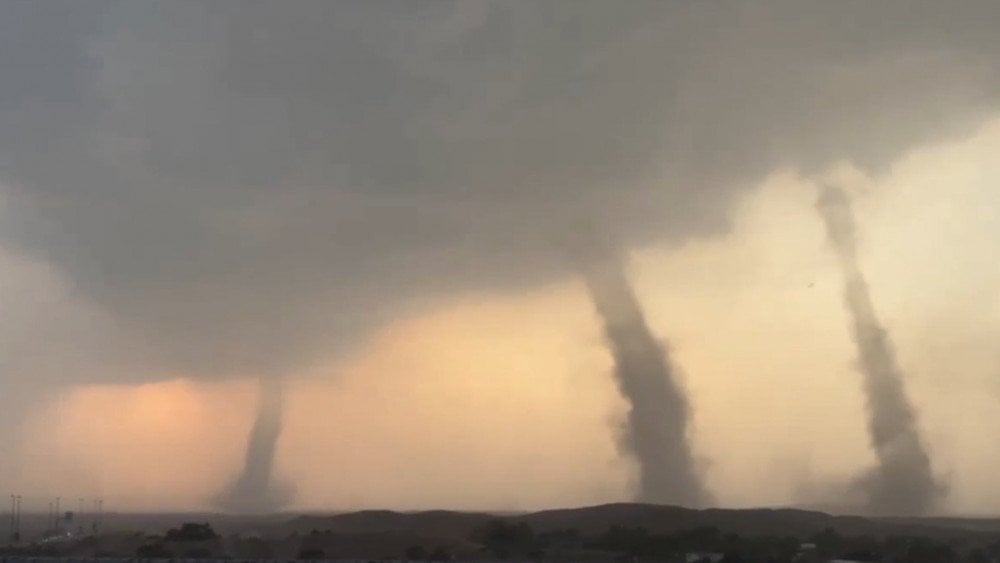
Powerful tornadoes lifting dust and sand into the air. Ras Al Khaimah emirate, UAE
The most anomalous phenomenon was the tornado rotation clockwise, just like that of the tornado in Spain, which is highly atypical for such events in the Northern Hemisphere.
New Zealand
On October 24, severe weather hit a major part of New Zealand. In Milford Sound, about 345 mm (13.6 inches) of rain fell within 13 hours.
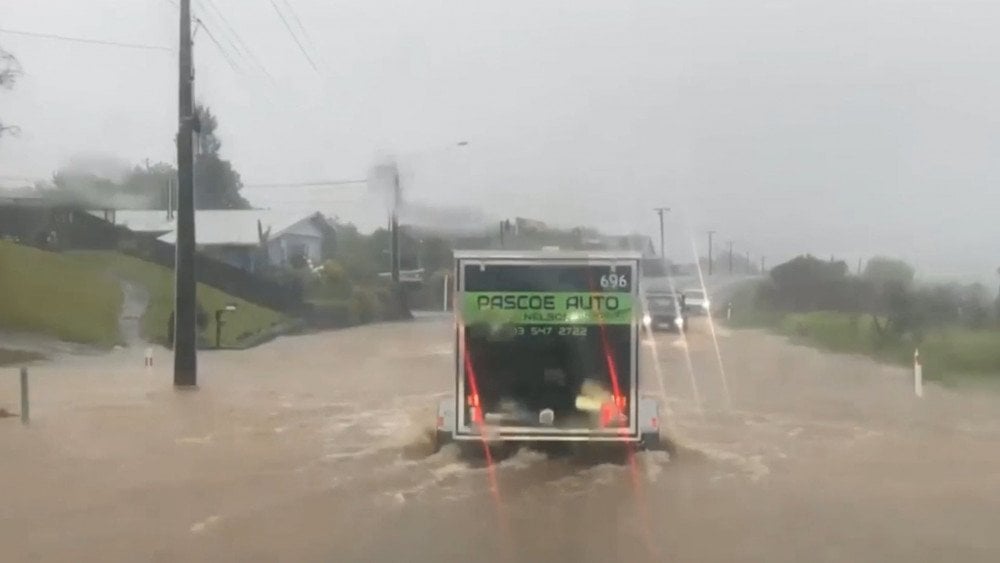
Record-breaking rainfall caused flooding of streets. Milford Sound, New Zealand
In Wellington, wind gusts reached 140 km/h (87 mph), literally blowing people off their bicycles. At the local airport, 28 flights were canceled. The region also experienced numerous power outages.
On October 26, on the way to Mount Cook village, a bus carrying 26 passengers went off the road due to snowfall. Passengers had to be evacuated.
According to New Zealand Transport Agency Waka Kotahi (NZTA), heavy rains, landslides, and snowfall resulted in a closure of dozens of highways across the South Island.
South America
Starting from October 23, a wave of storms struck several South American countries.
In central Argentina, heavy rains triggered flooding in three provinces: Córdoba, Santa Fe, and Buenos Aires.
Nearly 60 mm (2.4 inches) of rain fell within just an hour and a half in Buenos Aires and the area around it, while Córdoba province received over 300 mm (11.8 inches) of rain in a single day, surpassing October’s average.
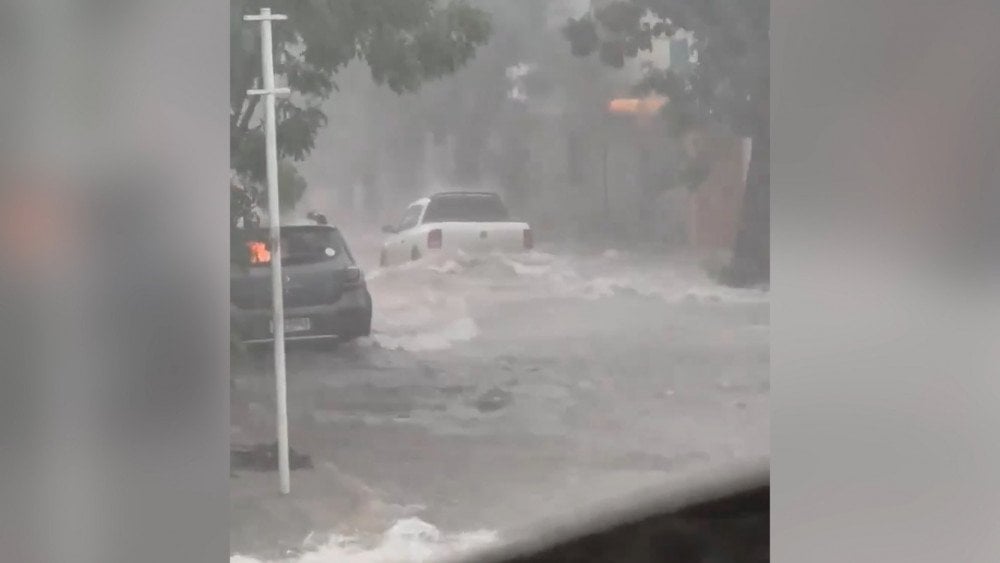
Heavy rains flooded roads in Córdoba province, Argentina
A severe storm also hit the inland parts of Uruguay. Hurricane-force winds uprooted trees and damaged roofs of buildings.
The city of Paysandú was hit the hardest, with such intense rainfall within a short period of time that the city was submerged.

The storm struck Paysandú, Uruguay
In Paraguay, the storm heavily affected two departments: Caaguazú and Itapúa.
Gusty winds and hail lashed the outskirts of Pindo’i city in Caaguazú, causing extensive damage to agriculture — the main source of income for local residents. A state of emergency was declared in the region.

Hail in Pindo’i city. Caaguazú department, Paraguay
The coastal area along the Paraná River and the city of Carlos Antonio López in Itapúa were also severely affected, with many houses left roofless.
In Brazil, storms hit six states in the south and southeast. In the city of Estância Schmidt in Sinimbú municipality, Rio Grande do Sul state, 130 mm (5.12 inches) of rain fell within two hours. Rain and hail damaged roads and crops in the region.
Farmers reported that harvesting had already started, but losses are expected to be substantial.
On October 11, the storm caused power outages affecting around 3 million people in the São Paulo metropolitan area. This was the second large-scale blackout in the country within a month due to severe weather.
The winds were extremely strong, causing damage in the coastal municipalities of Rio Grande do Sul state. Particularly affected were the municipalities of Osório, Santo Antônio da Patrulha, Tramandaí, and Imbé. Trees and poles were uprooted, and school buildings and a theater, newly constructed just a month earlier, were damaged.
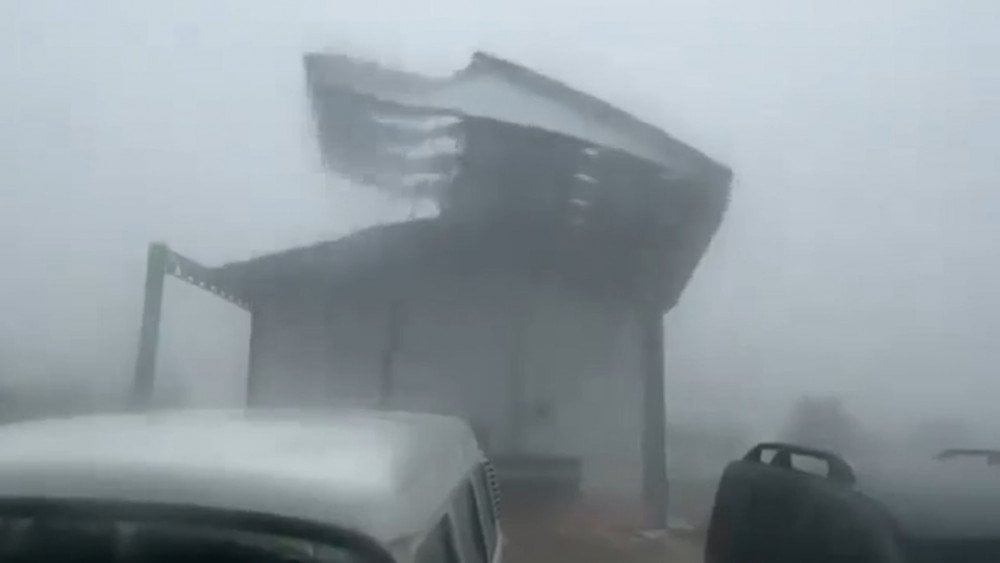
Gale-force wind destroying a building. Brazil
A private automatic weather station in Igrejinha recorded wind speeds of 133 km/h (82.6 mph).
On October 24, atmospheric pressure dropped to very low levels — around 995 hPa. It is worth noting that at 1,000 hPa, the risk of storms is already high, while lower levels are very rare and typically accompanied by extremely severe weather conditions.
In Rio de Janeiro, hurricane-force winds snapped mooring ropes and pushed a commercial ship Abreu e Lima adrift from the dock at Governador Island where it was undergoing repairs. The vessel ran aground about 200 m (656 feet) from the dock. The disaster claimed the lives of 8 people, with one person still missing.
You’re probably wondering: why do we keep making summaries of climate disasters? No, we don’t have an aim to frighten you or boost our ratings on a trendy topic. There is a more significant reason why we report these events again and again.
Our goal is to provide people with reliable information about the current events. Moreover, if you watch the forum “Global Crisis: The Responsibility,” you will see a broader picture of what is happening and what awaits us in the coming years.
Awareness is the first step to being prepared, especially in unexpected situations. After hearing this kind of information, you may be interested to look into climate risks in your region, prepare an emergency bag, and learn what to do during natural disasters. For example, you will know that during a flood, you shouldn’t attempt to save a car or other property, but should prioritize your own safety and that of people around you.
Don’t be reassured by news reports saying, “Such events happened before.” Yes, Spain did experience heavy rains before, and the Philippines and China did face typhoons.
However, severe anomalies like those occurring nowadays used to happen once in several decades or even centuries. Today, such events occur almost every day, affecting multiple regions simultaneously. This means that any of us can suddenly find ourselves hit by a natural disaster.
Please share this information with other people. By doing so, you can help your near and dear ones prepare and respond to critical situations effectively, and you can even save their lives.
Watch the video version of this article here:
Leave a comment